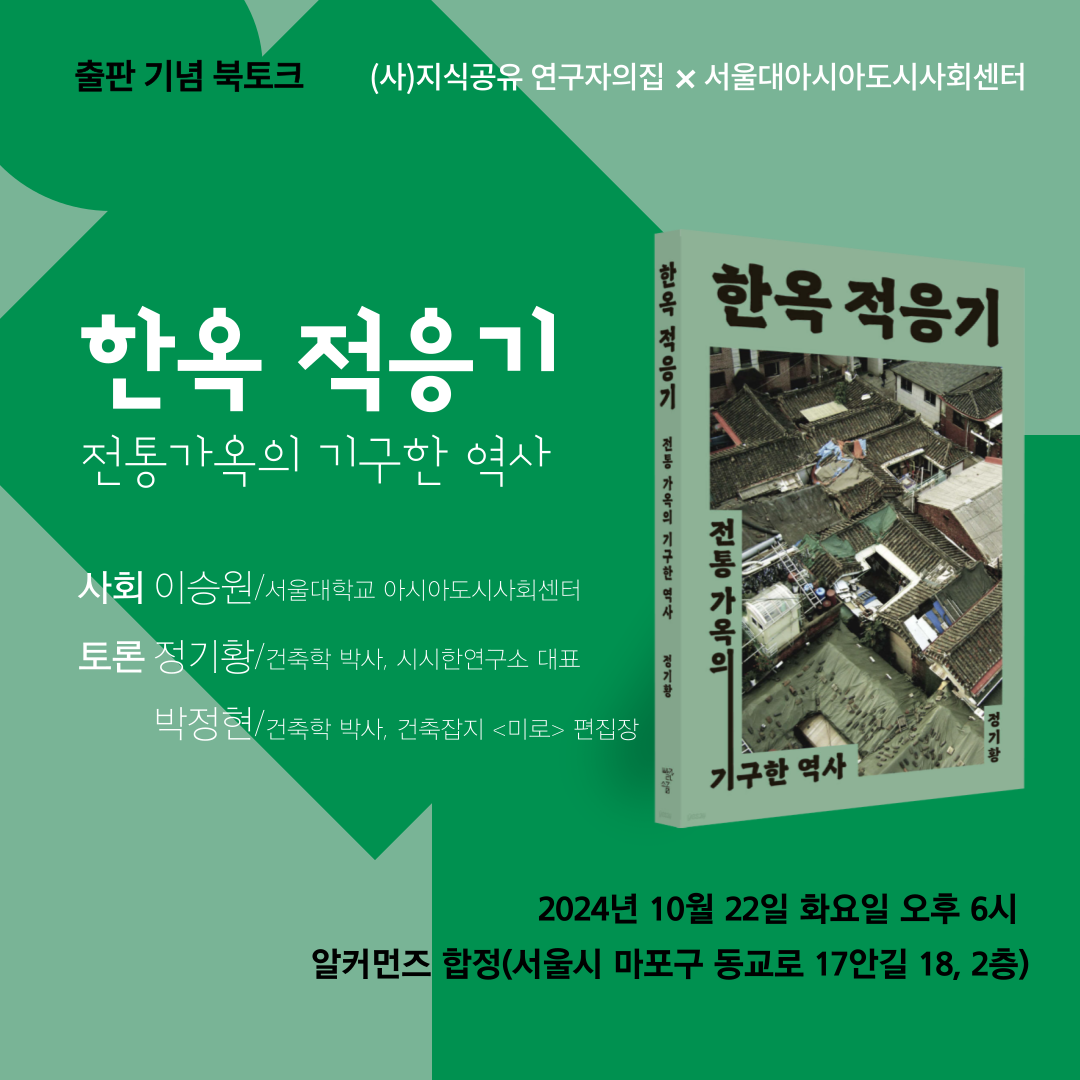Book Talk: Adjusting to Hanok
- Date: October 22nd, Tuesday, 2024, 18:00 – 21:00
- Location: R Commons Hapjeong
We will be holding a book talk on Adjusting to Hanok – The Complicated History of Traditional Korean Houses on Tuesday, October 22, 2024, at 6:00 PM. We hope for many to attend!
[Book Introduction]
Hanok exists to be used. Looking back at the history of traditional houses, we ask, “What is a home?”
The term Hanok was first used in 1908 in the Jeong-dong area to distinguish it from Western-style houses (Yangok) and Japanese-style houses (Ilok) after Korea’s ports opened to international trade. It became widely adopted in the 1970s by the government and media as a general term for traditional Korean houses. During the Joseon Dynasty, tiled-roof houses (Giwajip) were large residences inhabited only by the aristocracy. Most of the remaining tiled-roof houses in Seoul today are actually smaller-scale urban hanok, built during the Japanese colonial period. Despite this, the image of hanok in our collective imagination is often that of aristocratic houses with hipped-and-gabled (Paljak) roofs from the Joseon Dynasty. Why is there such a discrepancy between this perception and reality? To answer this, the author, an urban researcher and architect, meticulously traces the history of traditional Korean houses. The book explores not only the architectural techniques but also the role of climate, geography, and the sociocultural powers that influenced the construction and meaning of homes on the Korean Peninsula.
During the Joseon Dynasty, little attention was paid to the homes of commoners. In the colonial period, urban hanok were mass-developed by property developers. After Korea’s liberation, the government led the development of standardized apartment complexes, and hanok became tools of traditional ideology. Hanok were largely ignored by modern architecture, which prioritized profit, and were co-opted by those seeking to maintain legitimacy and power through tradition and nationalism. Yet, despite this, people continued to live in and adapt to hanok, creating new forms of these houses in response to changing needs. Throughout history, hanok have been defined and preserved as the symbolic “form” of aristocratic homes from the Joseon Dynasty by the state, government, politicians, professors, experts, and architects. However, the hanok we should pay attention to now are homes that have continuously adapted to their users’ needs—houses as places of life.

